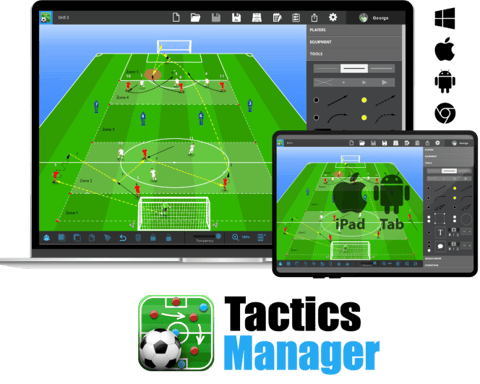Three teams of four rondo
Three teams of four rondo
RONDOS
10/23/20242 min read

Use For 5% Discount - AFL-LWZY
Setup:
Field Layout: Two adjacent squares, each measuring 15x15 meters.
Players: Three teams of four players each. Two teams start in one square, and one team starts in the other.
Equipment: Cones to mark the boundaries of the squares.
Objective:
To enhance players' ability to maintain possession under pressure, improve spatial awareness, and develop quick reaction skills in transition between offense and defense.
Drill Description:
Main Activity: In one square, six players work together to maintain possession against two defenders by completing at least five passes.
Transition: Once five passes are completed, players on the sides of the square are allowed to pass the ball to the opposite square.
Player Movement: Players who made the pass then move to the other square to continue the game, joining the two waiting players and facing two new defenders.
Role Reversal: If possession is lost, the team that loses the ball immediately switches to defending, and the team that gains possession starts their count of passes.
Key Coaching Points:
Quick Passing and Decision Making: Encourage players to make quick decisions and maintain a high passing speed to keep defenders off balance.
Spatial Orientation: Players should constantly be aware of their position relative to other players and the boundaries of the square.
Communication: Stress the importance of verbal and non-verbal communication to coordinate movements and passes effectively.
Defensive Transition: Emphasize quick transitions into defensive roles upon losing the ball to minimize the attacking opportunities for the opposing team.
Progressions:
Touch Limitation: Introduce a two-touch rule to increase the challenge and encourage quicker thinking and faster ball movement.
Single Defender: Replace the two defenders with one to increase the difficulty for the possession team and provide a different defensive challenge.
Goal-Oriented Play: Include mini-goals at the sides of each square for teams to score after completing a set number of passes, adding a goal-scoring element to the drill.
Variations:
Player Rotation: Rotate players between roles (side players, middle players, defenders) to ensure all participants experience each position.
Increased Pass Requirement: Raise the minimum number of passes before transitioning the ball to ten, increasing the possession challenge.
This drill is designed to simulate game-like scenarios that require maintaining possession, quick adaptation to turnovers, and effective communication and coordination within a team.






